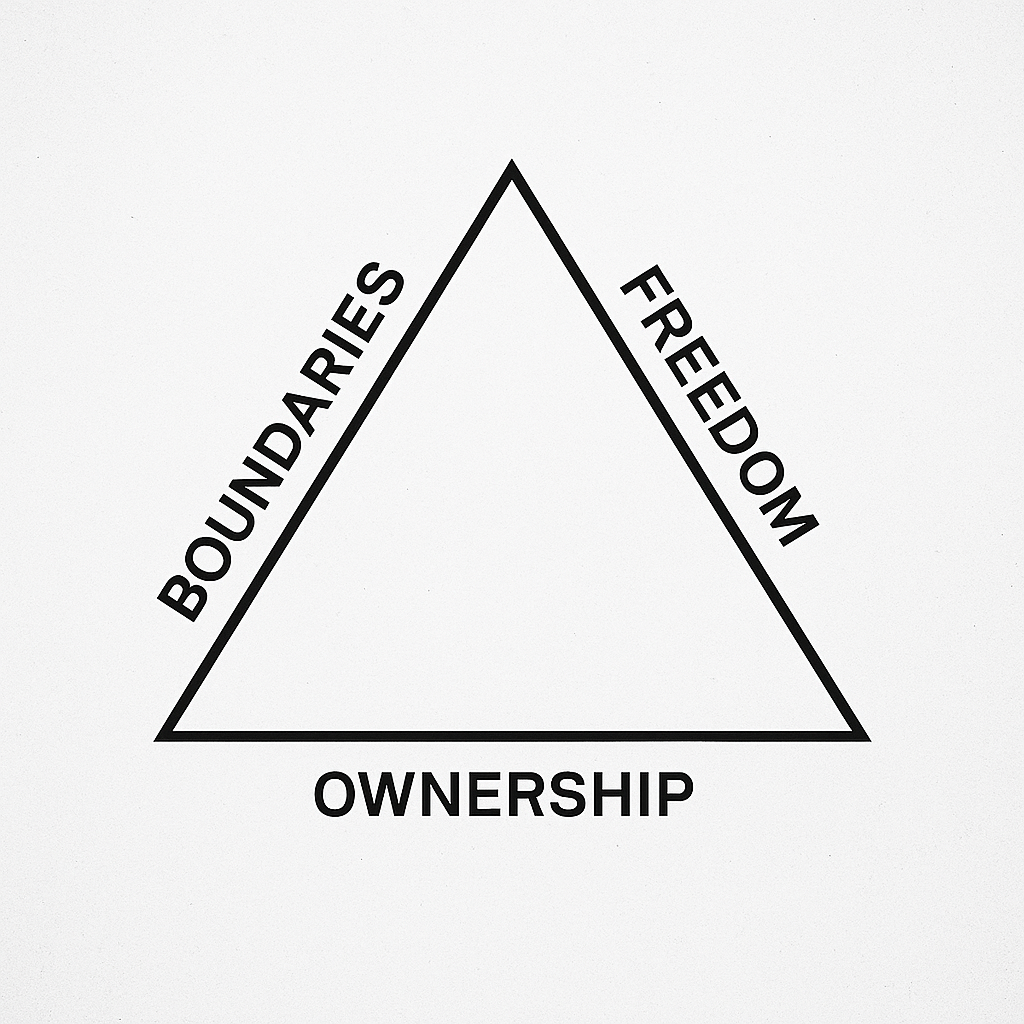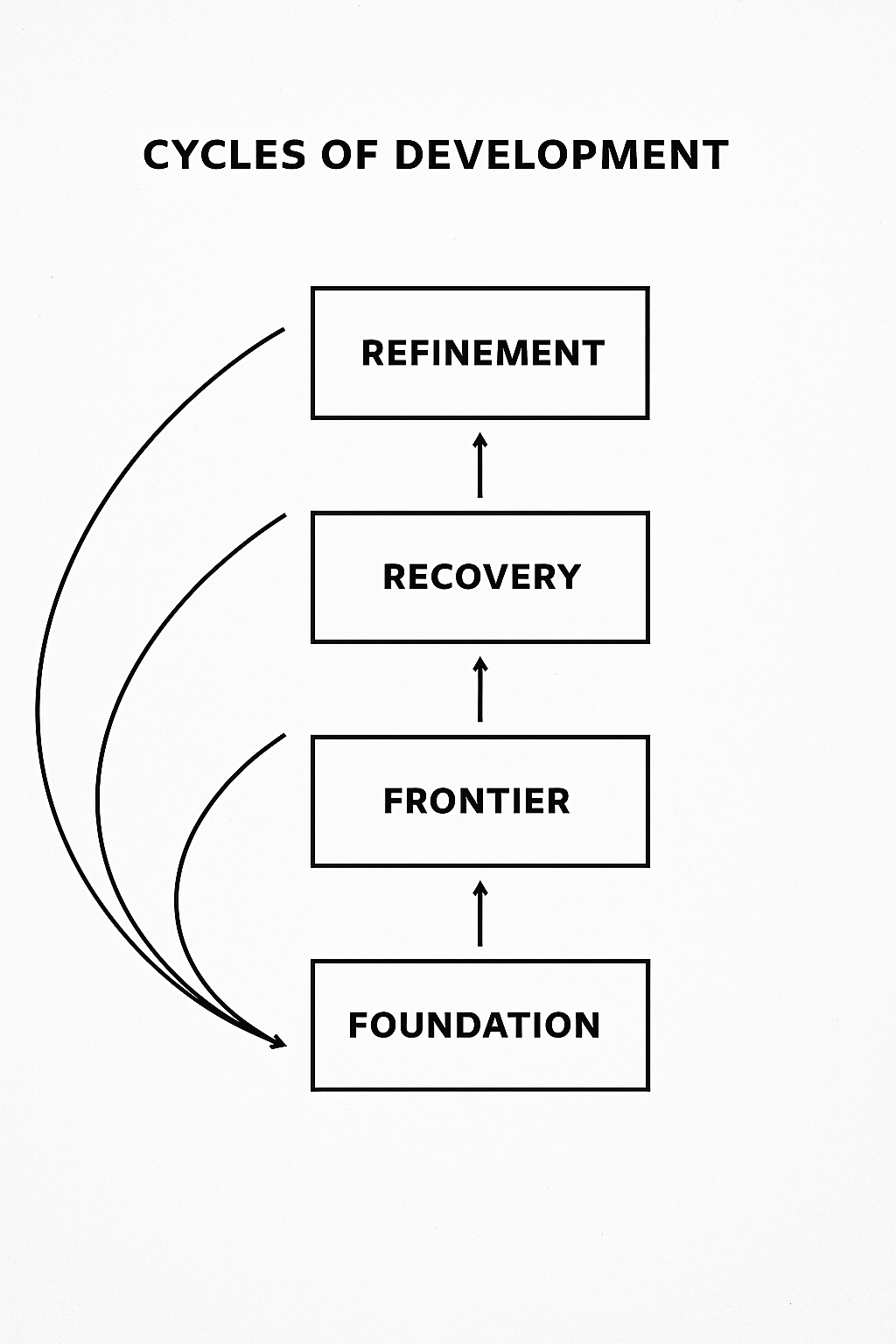Tenets of the Music Business

Ownership. Boundaries. Freedom. In music and in life.
The game of life requires many things.
To challenge the status quo. To humble your intentions while pursuing higher purpose. To keep your mind open to the world you live in—and the one still foreign to you.
Above all, a life worth living requires that we never stop learning.
The music industry is no different. It is a system perpetually reeling from its own lessons, desperately in need of renewal. The industry has always relied on agents of change—those willing to pierce the veil of convention, to risk re-shaping its design. But the question remains: where does meaningful change actually occur?
The ethos behind Forms + Shapes comes from one of my own lyrics:
“As forms take shape, an era awaits.”
We define ourselves in eras because eras help us make sense of time: they frame what came before, where we stand now, and how we might seize the future. And yet the music business too often gets stuck between eras—haunted by its past, clinging to legacy structures, even as new technologies accelerate far beyond its grasp.
Right now, we stand at an inflection point. Traditional models are exhausted, technological disruption is unavoidable, and the stakes—financial, cultural, even existential—have never felt higher.
This is the moment for tenets.
Tension as Design, Not Desperation
If there is one constant across every cycle of disruption, it is tension. We see it in sex, in sport, in love, in war. But music—music is different. It does not require domination, though it can reflect it. It does not demand tension, though it thrives within it.
Music is tension made resonant. It is conflict, release, and renewal rendered audible.
When I published frameworks for AI music business models (The AI Era series), I did so because I could feel the tension crystallizing into desperation. CEOs telling me, “my team hasn’t built a model yet.” Boards operating on half-measures. The risk wasn’t just poor strategy, it was the design of desperation itself—repeating the mistakes of UGC-era chaos, this time at AI’s accelerated scale.
Better to share the playbook and let others “steal my homework” than to let tension calcify into panic. Because tension—unlike desperation—can be designed for.
This isn’t just an industry problem. It’s a human problem. Perhaps even the grand thesis of humanity itself: the perpetual state of tension.
The question is whether we treat tension as a destructive force, or as the driver of progress.
Tenets for an Era of Flux
The human experiment is cyclical: life, art, and technology are forever interdependent.
As I argued in A Beautiful Mess, systems are never neat. They are layered, overlapping, often contradictory. Progress doesn’t come from eliminating the mess but from navigating it—treating friction not as failure, but as feedback. The music business has always been shaped by this reality: strategy emerging not from order, but from the way we move through complexity.
To navigate the next era, we need recurring guideposts. I call them tenets:
- Ownership — The Foundation
- Boundaries — The Discipline
- Freedom — The Aspiration
Ownership — The Foundation
Ownership is the hinge upon which every outcome in this business swings. It is not just a legal condition; it is a state of clarity about who controls what, and why.
For executives and founders, ownership means equity and skin in the game. Without it, decisions become transactional rather than transformational, incentives collapse into short-term survival. A company without owners is a bureaucracy; a company with owners is a living organism, where outcomes matter because they are tied directly to those who shape them. Foundational architects of companies must hold equity not simply as wealth, but as responsibility.
For artists and songwriters, ownership means doing everything possible to hold onto masters, rights, and the catalog they are building. Not because ownership is sacred for its own sake, but because it provides leverage. With leverage comes the ability to choose: when to license, when to sell, when to hold, when to bet on yourself.
For voice talent—singers, actors, creators—ownership now extends into new domains. AI makes the human voice a tradable, replicable asset class. That means the only path to sustainable agency is to create and control your own certified voice models. Owning the AI version of yourself is no different than owning your master recordings: it is the foundation of your future licensing power.
It also means building ecosystems around ownership—partnering with distribution companies that are innovative and aligned, able to evolve with artists and rights-holders, and designed to extend ownership and control into the marketplace without losing integrity.
But ownership also goes deeper than contracts and capital. To own your intentions is to have clarity in decision-making. If you don’t own your intentions, someone else will redirect them. Strategic clarity—the “why” behind every move—is the most overlooked form of ownership in this industry.
And finally, ownership is cumulative. Each new work, each deal, each idea adds to a growing portfolio. No one can predict which piece will break through. But long-term success comes from continually expanding the body of work, building a portfolio that ensures at least part of it will resonate. Ownership of your body of work is not just holding rights; it is the strategy of persistence.
Ownership is the only true hedge against desperation. It is the foundation. Without it, the other tenets—boundaries and freedom—cannot exist.
Boundaries — The Discipline
Boundary-setting is fundamental to interaction. To set a boundary is to define what is sacred, to claim what cannot be encroached upon. And when we loosen or forgo boundaries, we send an equally powerful message: that we are willing to experiment, to work with forces outside our comfort zone, to open ourselves up to transformation.
For artists, boundaries mean protecting creative identity against commodification. It is the choice to draw lines with labels, platforms, or even fans—deciding how much access is too much.
For executives and founders, boundaries mean discipline. Knowing which deals to refuse, which growth opportunities to delay, which distractions to block. Without boundaries, companies drift into mission creep, pursuing growth for growth’s sake rather than strategy with integrity.
For voice talent, boundaries are the guardrails on AI licensing. Owning your model is not enough; you must also set the rules of its use—contexts, conditions, ethics. A voice without boundaries becomes a tool of exploitation.
For fans, boundaries define intimacy and community. In the fan economy, boundaries can be loosened to allow fan-to-fan communities to create value with an artist’s IP. But if boundaries collapse entirely, parasocial overload sets in, turning connection into intrusion.
For the individual, boundaries mean protecting attention, time, and energy. Without them, burnout becomes inevitable. Creative work requires both openness and protection; boundary-setting is how we preserve the space to create.
Boundaries are the discipline, the guardrails that keep ownership intact.
Freedom — The Aspiration
Freedom is the aspiration toward which all ownership and boundary-setting is directed. It is the calm power of self-authorship, self-discovery, self-awareness—the ability to choose how you live, work, and create.
For artists, freedom is the dream of making without constraint: to record and release in ways that reflect their vision, not the coercion of platform algorithms or contract obligations, without economic coercion.
For executives and founders, freedom is the ability to innovate within and outside legacy structures. To chart new markets, build new models, design without inherited chains of command. But this freedom only exists if ownership and boundaries are secured first.
For voice talent, freedom is deciding how and when their AI voice is used. It is the autonomy to refuse, the agency to control, the assurance that technology extends their power rather than extracts it.
For fans, freedom means choosing how to engage, whether in direct support, in peer-to-peer exchange, or in community building, without being locked into exploitative platform mechanics that siphon value away from culture.
For the individual, freedom is time-richness: the space to rest, reflect, recalibrate, and live well. Success without freedom is another form of captivity.
Freedom is the aspiration. Ownership builds the foundation. Boundaries provide the discipline. Freedom is the horizon toward which they point.
Ownership = foundation.
Boundaries = discipline.
Freedom = aspiration.
Together, they form a systemic triad.

This triad is not unique to music, but in music it is magnified—because music has always been where human tension becomes audible. If we design for ownership, guard it with boundaries, and direct it toward freedom, the industry can renew itself. If we don’t, desperation will design for us.
But orientation alone is not enough. We live in motion—in choices, actions, and recalibrations that unfold over time. To make sense of those choices, I’ve come to rely on cycles: four recurring stages that apply as much to launching a business as they do to releasing a body of work or recalibrating your personal life.
Cycles are how we visualize decision-making: strategic, practical, or life-affirming. They help us see not just where we are, but what choices are available, and how the tenets—ownership, boundaries, freedom—can guide us through each turn.
Cycles, Renewal, Legacy
Every artist and company must contend with legacy. As I wrote in What I Carry, What I Create and Legacy and the AI Proposition, legacy is not just what you own or what you leave behind—it is the pattern of choices you set in motion, the cycles you repeat or refuse to repeat.

Over thirty years I’ve distilled these cycles into four stages:
- Foundation — Build pillars of strength where stability can be sustained.
- Frontier — Push into untamed territory; confront systemic neglect.
- Recovery — Acknowledge loss as part of progress; reset strategically.
- Refinement — Sharpen what has been built; cultivate, invest, prepare.
Then the cycle renews. At times, cycles reset unexpectedly at any stage—back to the need for stability—because life, in all its unpredictability, rarely unfolds in straight lines.
On a more macro level, projects and lives move through sub-cycles, while an overarching grand cycle defines eras. I often see my own work through this lens: asking where I am in the grand cycle, what I’m building, and what stage I must lean into. The only thing that truly disturbs this focused thinking is when survival itself is shaken.
Survival is inherent—we endure because we must. But freedom is chosen. It is the highest ambition: to live and create with clarity, to design with purpose, to find dignity in the balance between what we own, what we protect, and what we release.
And that is what the tenets return us to—no matter where we are in the cycle.
So it goes...
The music industry has always been a proving ground for human design under pressure: from the failures of streaming economics (WT$ Is Streaming Economics), to the messy carve-outs that created today’s fractured rights landscape (The Big Carve Out), to the looming AI economy that tests whether we can build sustainable frameworks in real time (The AI Era series).
It is a beautiful mess. It is a story of legacy, cycles, invention, and renewal. And it is ours to shape—if we heed the tenets, resist desperation, and design for freedom.